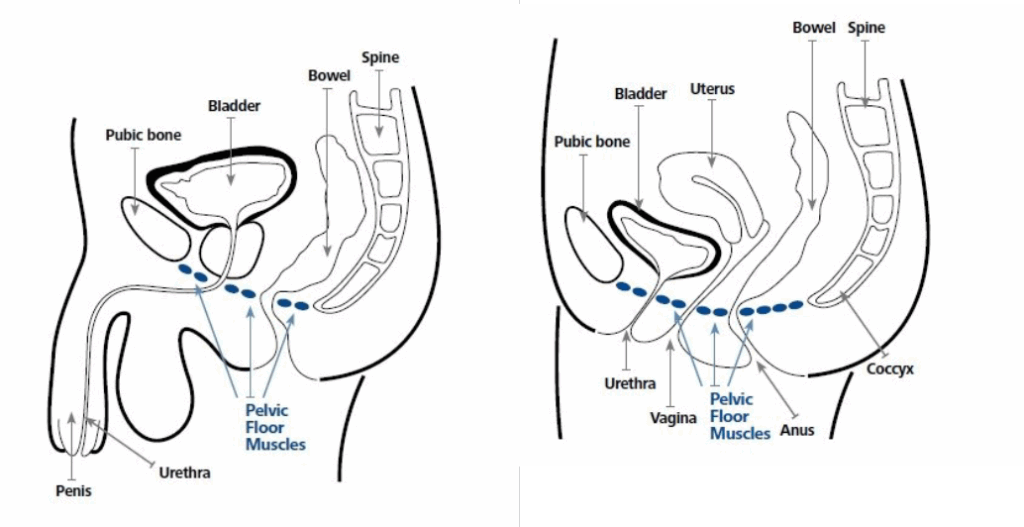Bowel problems are very common. These may be constipation, difficulty passing stool, not emptying completely so you have to go back to the toilet, leaking stool or having to get to the toilet very quickly. If you are leaking stool you will have an assessment to identify any treatable condition that could cause the problem. It can also help to follow general healthy bowel advice.
What should my stools be like?
Aim to:
- Have a bowel movement between 3 times a week and 3 times a day
- Pass a soft, formed stool – like a smooth sausage or a snake – type 4 on the stool chart
- Go to the toilet without straining
While you are seeing the Nurse do fill in a bowel diary for each appointment so you can see what works and what doesn’t.

Drinks
- Drink 1.5-2 litres per day
- If you don’t drink enough your body will take the water out of your stools making them hard and difficult to pass
- Avoid drinks with caffeine (tea, coffee, coke, hot chocolate) which can stimulate the bowel.

Food and Fibre
Make one change to your diet at a time and keep a food and bowel diary to see what works for you.
- Avoid foods and drinks with sweeteners which can cause loose stools (e.g. sorbitol)
- Have 3 regular meals and eat breakfast every day
- It can help to eat small meals often rather than eating only once or twice a day.

Increasing your fibre intake can help bulk up your stools.
- Try eating a high fibre breakfast cereal e.g. porridge, Weetabix or shredded wheat
- Eat 5 portions of fruit and veg per day (includes fresh, frozen, dried and tinned)
- Choose wholemeal bread or higher fibre white bread
- For snacks, try fresh fruit, vegetable sticks, rye crackers, oatcakes and unsalted nuts.
Some people who have loose stools find that fibre helps bulk up the stools while others need to reduce fibre to get a formed stool for example reducing fruit to 1-2 portions per day.
Position and timing
- About 20-30 minutes after your breakfast and a warm drink, and after your main meal, go and sit on the toilet
- Allow time for your bowel to empty fully
- Use the correct position for sitting on the toilet – you will need a step or stool to put your feet on.
- If you feel your bowel isn’t emptying you can practice the brace and bulge technique every day to teach the muscles how to empty the bowel properly.

Brace and bulge technique to help with bowel emptying
Allow 10 minutes to practice (30 minutes after breakfast is best) without interruption
- Sit with your knees higher than your hips, using step or stool to put your feet on.
- Lean forwards
- Rest your forearms on your thighs
- Relax, breathe, don’t hold your breath
- Brace your tummy muscles – place your hands on your waist. Expand your waist and feel your hands being pushed out sideways (it may help to say mmmm)
- Relax your anus to allow the stool to pass. Only push down from above once the anus is relaxed.
- Relax very slightly for one second, maintaining pressure without the push, then brace outwards and push down again.
- Repeat the steps, don’t worry if you aren’t making progress, try again the next day.
Pelvic Floor Exercises
You can use your pelvic floor muscle to help you control your bowel and prevent leaks. Start by making sure you know how to squeeze your pelvic floor muscle and getting it as strong as possible. Sit in a chair and keep your tummy muscles, leg muscles and buttock muscles relaxed.
- Squeeze around your back passage as if you are trying to stop wind (and around your vagina)
- Squeeze as if you are trying to stop urine mid-stream.
Slow exercises: Tighten and draw up both around the back passage (and the vagina) and as if you are stopping urine mid-stream. Try to hold the squeeze for 10 seconds.
Fast exercises: Tighten and draw up both around the back passage (and the vagina) and as if you are stopping urine mid-stream, then relax.

Do 10 slow exercises (holding for 10 seconds) and 10 fast exercises, 3 times a day to make your muscles stronger. You can use an app like the NHS Squeezy App to remind you to do the exercises 3 times a day or build them into your daily routine.
Then you can contract the muscles to help you hold on and stop leakage of stool. You can also squeeze up the muscles to “close off” after a bowel movement.
Coping with leakage
- Keep your anal area clean and dry. If you wear a pad and it is soiled change it and clean your skin as soon as possible.
- Clean your skin with unperfumed soap and water and pat dry gently. Avoid wipes with perfume or alcohol in. Barrier creams can help protect your skin.
- Wear cotton underwear and try to allow air to your skin for some time each day.
- You can speak to your nurse about coping with leakage by using anal plugs or pads.
- Radar keys for entry to accessible toilets can be purchased from https://www.disabilityrightsuk.org/ Bladder and Bowel UK can send you a “Just Can’t Wait” card. They also provide information and advice for people with bladder or bowel problems https://www.bbuk.org.uk/ Helpline 0161 214 4591
Bowel Record Chart
Please fill in this chart every time you have a bowel movement for 2 weeks.
Name:______________________________________________ Date of Birth:__________________
| Date | What time did you go to the toilet? | Type of Stool (choose a number from the Bristol Stool Chart – overleaf) | Size of bowel movement (large, medium or small) | Comments (tell us about any urgency, leakage, straining etc) |